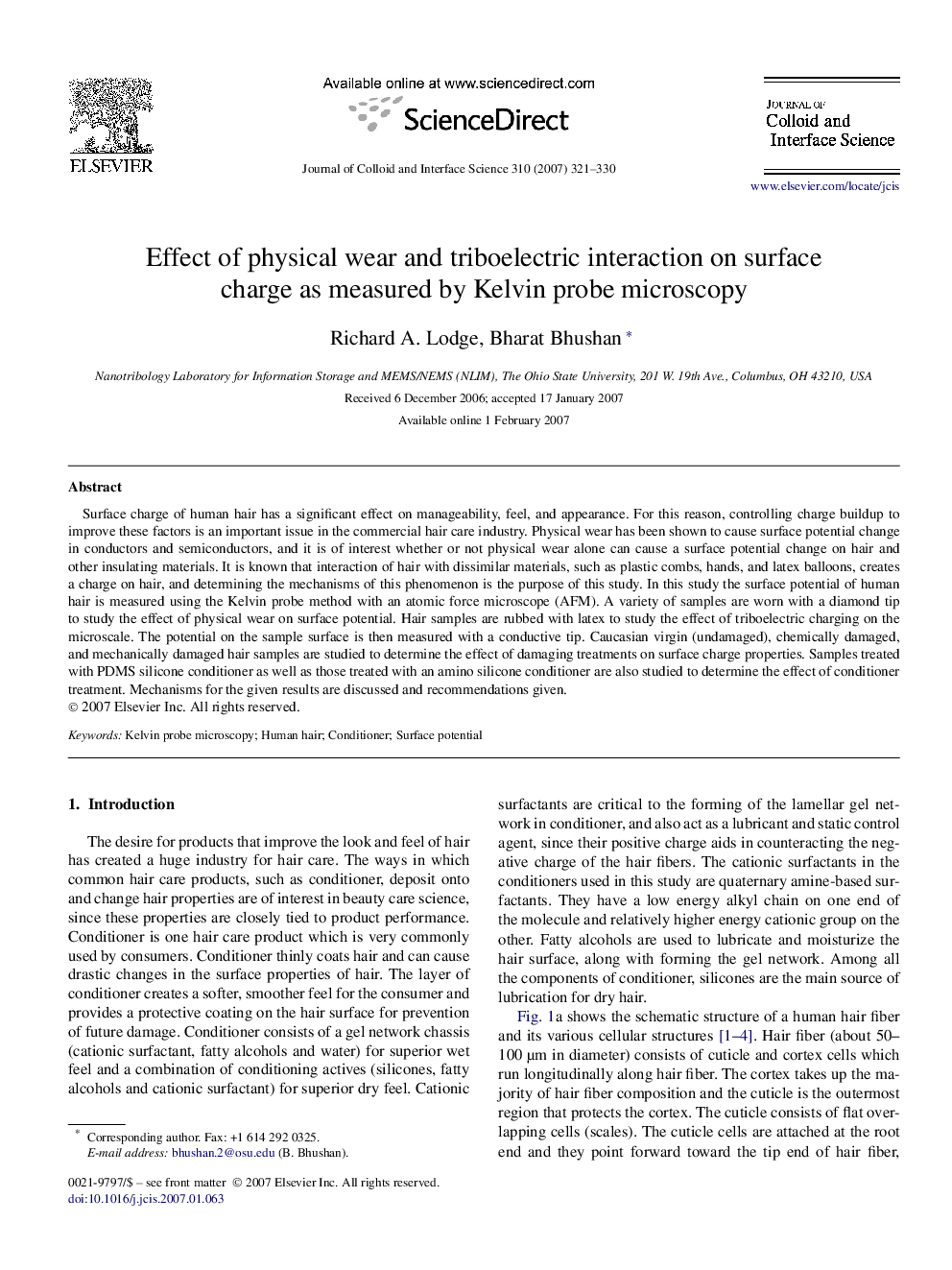| Article ID | Journal | Published Year | Pages | File Type |
|---|---|---|---|---|
| 612344 | Journal of Colloid and Interface Science | 2007 | 10 Pages |
Surface charge of human hair has a significant effect on manageability, feel, and appearance. For this reason, controlling charge buildup to improve these factors is an important issue in the commercial hair care industry. Physical wear has been shown to cause surface potential change in conductors and semiconductors, and it is of interest whether or not physical wear alone can cause a surface potential change on hair and other insulating materials. It is known that interaction of hair with dissimilar materials, such as plastic combs, hands, and latex balloons, creates a charge on hair, and determining the mechanisms of this phenomenon is the purpose of this study. In this study the surface potential of human hair is measured using the Kelvin probe method with an atomic force microscope (AFM). A variety of samples are worn with a diamond tip to study the effect of physical wear on surface potential. Hair samples are rubbed with latex to study the effect of triboelectric charging on the microscale. The potential on the sample surface is then measured with a conductive tip. Caucasian virgin (undamaged), chemically damaged, and mechanically damaged hair samples are studied to determine the effect of damaging treatments on surface charge properties. Samples treated with PDMS silicone conditioner as well as those treated with an amino silicone conditioner are also studied to determine the effect of conditioner treatment. Mechanisms for the given results are discussed and recommendations given.
Graphical abstractSurface charge of human hair has a significant effect on manageability, feel, and appearance. The surface potential of human hair is measured using the Kelvin probe method with an AFM.Figure optionsDownload full-size imageDownload as PowerPoint slide
